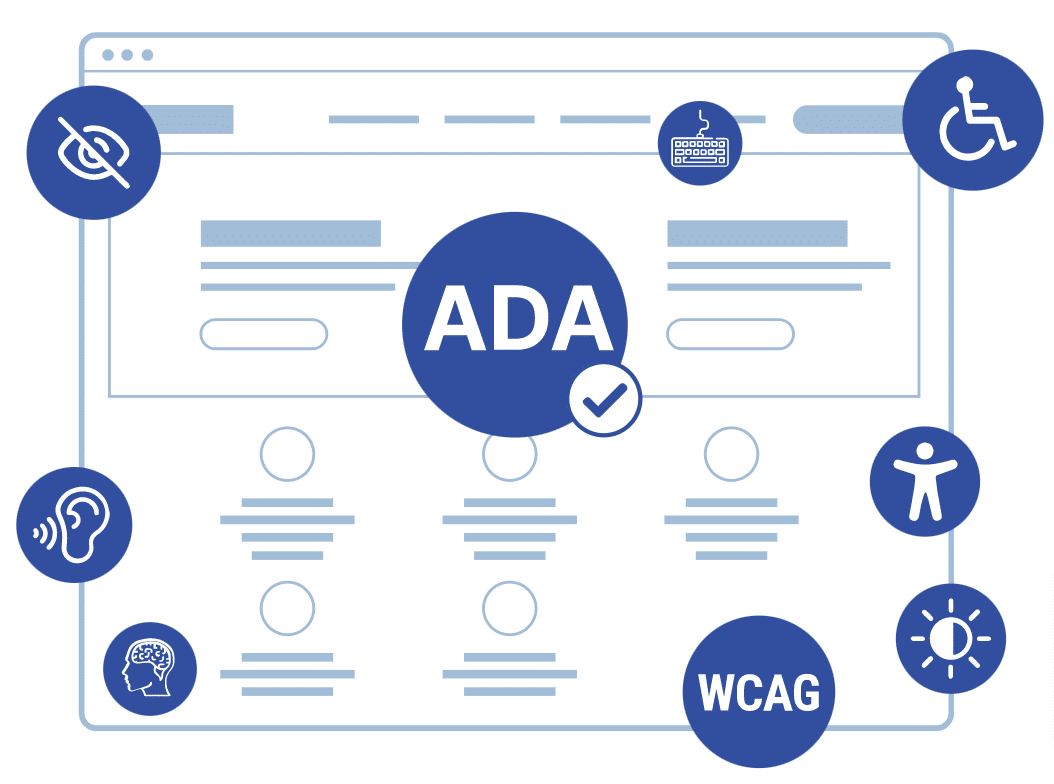Understanding ADA Compliance for Websites: Ensuring Accessibility for All Users

ADA (Americans with Disabilities Act) Compliance for websites is a critical aspect of ensuring equal access to online information and services for individuals with disabilities. In today's digital age, it's essential for websites, including those built on platforms like Shopify, to adhere to ADA guidelines. This blog explores the importance of ADA Compliance for websites, its impact on user experience, and how businesses can achieve and maintain compliance to foster inclusivity.
What is ADA Compliance for Websites?
ADA Compliance for websites refers to following accessibility standards outlined in the Americans with Disabilities Act to ensure individuals with disabilities can access, navigate, and interact with online content effectively. It includes providing accommodations such as alternative text for images, keyboard navigation options, and compatibility with assistive technologies.
Why ADA Compliance for Websites Matters
1. Legal Requirement
ADA Compliance for websites is mandated by law to prevent discrimination and ensure equal access to goods and services provided online. Non-compliance can lead to legal actions, penalties, and damage to reputation.
2. Inclusivity and Accessibility
By making your website ADA compliant, you create an inclusive environment where all users, regardless of their abilities, can access and interact with your content and services without barriers.
3. Enhanced User Experience
Accessible design features improve usability and user experience for everyone, including those with disabilities. This can lead to increased engagement, satisfaction, and loyalty among all website visitors.
Key Elements of ADA Compliance for Websites
1. Accessibility Features
Implementing features such as:
-
Alternative Text: Providing descriptions for images that can be read by screen readers.
-
Keyboard Accessibility: Ensuring all functionalities can be accessed using a keyboard alone.
-
Readable Text: Using fonts and colors that are easy to read for users with visual impairments.
2. Compliance Audits
Conducting regular audits to assess website accessibility and identify areas that need improvement to meet ADA standards.
3. Ongoing Maintenance
Continuously updating and monitoring your website to ensure ongoing compliance with ADA guidelines as technology and standards evolve.
Achieving ADA Compliance for Your Website
1. Understanding ADA Guidelines
Familiarize yourself with ADA guidelines and requirements specific to websites to ensure comprehensive compliance.
2. Implementing ADA Compliance Measures
Integrating ADA Compliance features and adjustments into your website's design, content, and functionalities.
3. Partnering with ADA Compliance Experts
Engaging with ADA Compliance for website services providers to receive specialized guidance and support in achieving and maintaining buy ADA compliance. Get More Info on how these providers can assist you in ensuring compliance.
Conclusion
ADA Compliance for websites is not just about legal compliance—it's about creating an inclusive and accessible online environment that welcomes all users. By prioritizing ADA Compliance, businesses can enhance user experience, expand their audience reach, and demonstrate a commitment to accessibility and inclusivity.
Embrace ADA Compliance for your website today to ensure equal access and usability for all visitors. Choose to integrate ADA Compliance features and practices to build a website that fosters engagement, trust, and satisfaction among users, regardless of their abilities.
- Industry
- Art
- Causes
- Crafts
- Dance
- Drinks
- Film
- Fitness
- Food
- Games
- Gardening
- Health
- Home
- Literature
- Music
- Networking
- Other
- Party
- Religion
- Shopping
- Sports
- Theater
- Wellness
- News


